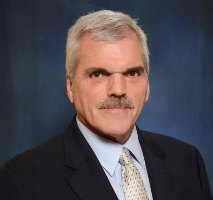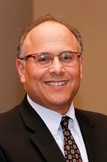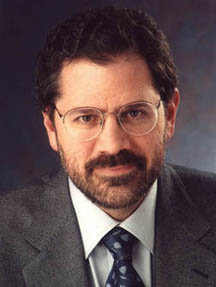Roper v. Simmons Ten Years Later, Part 2: Organizing Amicus Support, Developing Legislation Campaigns, and Preparing for Oral Arguments

Ten years ago, on March 1, 2005, the United States Supreme Court, in Roper v. Simmons, finally abolished the juvenile death penalty. It was a momentous day, but the history of the events leading to this victorious ruling remain, for the most part, in the memories and notes of the bold, smart and dedicated individuals who made it happen.
In celebration of the 10th anniversary of Roper, we invited some of those individuals to share their recollections and reflections on their work that culminated in this extraordinary decision.Through this 3-part blog series, we share those conversations with you. Read Part 1 here. Be sure to continue reading in part 3.
|
|
|
Left to right: Nina Totenburg, NPR; Leonard Rubinstein, Johns Hopkins University; David Fassler, University of Vermont; Stephen Harper, Florida International University; and Marsha Levick, Juvenile Law Center, on the U.S. Supreme Court Steps, November, 2004. |
Part 2: Organizing Amicus Support, Developing Legislation Campaigns, and Preparing for Oral Arguments
What was your strategy for publicizing juvenile executions during 2000-2004, before Roper was argued? What were you hoping to accomplish, and who were you trying to influence?
 Patricia Puritz, Executive Director, National Juvenile Defender Center: Actually, I think the ABA’s work leading up to 2000 was the most important: it set the stage for what followed. We needed to start somewhere, so we followed Vic’s cases and started helping lawyers on a case by case basis. We needed an organization like the ABA out front on this issue, and we took advantage of every opportunity we could to publicize the cases, raise awareness, arrange speaking engagements for the ABA president or others, and submit amicus briefs. Over time, Sadie Rosenthal (ABA), working closely with Anne James (International Justice Project), designed the ABA outreach and support strategy for defenders. That strategy turned into a decade-long clemency effort with many partners, including Steve Harper, Steve Drizin, Bernardine Dohrn, and a team that grew exponentially.
Patricia Puritz, Executive Director, National Juvenile Defender Center: Actually, I think the ABA’s work leading up to 2000 was the most important: it set the stage for what followed. We needed to start somewhere, so we followed Vic’s cases and started helping lawyers on a case by case basis. We needed an organization like the ABA out front on this issue, and we took advantage of every opportunity we could to publicize the cases, raise awareness, arrange speaking engagements for the ABA president or others, and submit amicus briefs. Over time, Sadie Rosenthal (ABA), working closely with Anne James (International Justice Project), designed the ABA outreach and support strategy for defenders. That strategy turned into a decade-long clemency effort with many partners, including Steve Harper, Steve Drizin, Bernardine Dohrn, and a team that grew exponentially.
|
By 2005, the coalition included national NGO’s and professional associations, such as:
|
 Bernardine Dohrn: Between 2000 and 2004, we formed a large coalition, mobilized at the national and state level, due in part to remarkable organization by Adam Ortiz at the ABA Juvenile Justice Center and Lauren Adams at Northwestern University. The Juvenile Death Penalty Initiative (JPDI) conducted an educational campaign which included op-eds; position papers and resolutions; speaking at national, state, and international meetings; mobilizing juvenile defenders; and familiarizing researchers in adolescent development with the critical issues. Anne James, Connie delaVega, Sandra Babcock, and others built an international strategy. Working with the European bar associations, the European Union, and many international human rights organizations, they obtained resolutions and calls for stays of executions from the Mexican government, Nelson Mandela, Archbishop Desmond Tutu, the Council of Europe, and the Inter-American Commission on Human Rights.
Bernardine Dohrn: Between 2000 and 2004, we formed a large coalition, mobilized at the national and state level, due in part to remarkable organization by Adam Ortiz at the ABA Juvenile Justice Center and Lauren Adams at Northwestern University. The Juvenile Death Penalty Initiative (JPDI) conducted an educational campaign which included op-eds; position papers and resolutions; speaking at national, state, and international meetings; mobilizing juvenile defenders; and familiarizing researchers in adolescent development with the critical issues. Anne James, Connie delaVega, Sandra Babcock, and others built an international strategy. Working with the European bar associations, the European Union, and many international human rights organizations, they obtained resolutions and calls for stays of executions from the Mexican government, Nelson Mandela, Archbishop Desmond Tutu, the Council of Europe, and the Inter-American Commission on Human Rights.
What specific steps were taken between 2000-2004 that you believe were most crucial to getting the Court to overturn the juvenile death penalty?
 Stephen Harper, Visiting Clinical Assistant Professor: There were so many steps. Letting the public know that juvenile offenders were being executed was first and foremost. Identifying, coordinating, and expanding national efforts and legislative initiatives to call for its abolition (such as when we approached the American Psychiatric and American Psychological Associations to adopt policies). Providing technical assistance to lawyers to prevent sentences of death. Coordinating our efforts with the international community which had all but eliminated the death penalty for juveniles.
Stephen Harper, Visiting Clinical Assistant Professor: There were so many steps. Letting the public know that juvenile offenders were being executed was first and foremost. Identifying, coordinating, and expanding national efforts and legislative initiatives to call for its abolition (such as when we approached the American Psychiatric and American Psychological Associations to adopt policies). Providing technical assistance to lawyers to prevent sentences of death. Coordinating our efforts with the international community which had all but eliminated the death penalty for juveniles.
|
Contrasting the cases of Napoleon Beazley (TX) and Christopher Simmons in (MO) demonstrated alarming racial disparities. Both offenders were tried as adults and convicted of murder at age 17 and faced imminent executions in 2001. One was white, the other African-American. Both expressed remorse for their crimes and became model prisoners on death row. Both were involved in religious and community programs. On May 28, 2002, Simmons was granted a temporary stay of execution. That same day, Beazley was executed in Texas. |
Dohrn: Clemency campaigns taught the JDPI how to face the terrible facts of the crimes of murder while also underscoring youth’s lesser culpability and their greater potential for rehabilitation and transformation. We learned to be honest with the facts - never minimize or understate - and conscious of the suffering of victim’s families and community harm, as well as the grief of the prisoner’s families. We benefitted from the powerful work of Murder Victims’ Families for Reconciliation. Bryan Stevenson of the Equal Justice Initiative and Walter Long of Texas devoted their energies to consulting with local attorneys and transforming juvenile death penalty practice at both the criminal trial and appellate levels.
 Steven Drizin, Clinical Professor of Law: I think a number of things fell into place in the period that led to the Court's decision, some of which we played a role in and some of which we benefitted from. We raised public awareness of the issue by fighting hard on several fronts. We supported lawyers in individual cases to stop or delay juvenile execution. We built support among editorial boards and columnists. We made connections with grass-roots advocates and worked with them to find sponsors for legislation aimed at raising the age of eligibility for a death sentence to 18, and we grew a coalition of the usual and unusual suspects from the United States and around the world to oppose the juvenile death penalty. So, when the Court accepted the Simmons case, we were organized and ready to go.
Steven Drizin, Clinical Professor of Law: I think a number of things fell into place in the period that led to the Court's decision, some of which we played a role in and some of which we benefitted from. We raised public awareness of the issue by fighting hard on several fronts. We supported lawyers in individual cases to stop or delay juvenile execution. We built support among editorial boards and columnists. We made connections with grass-roots advocates and worked with them to find sponsors for legislation aimed at raising the age of eligibility for a death sentence to 18, and we grew a coalition of the usual and unusual suspects from the United States and around the world to oppose the juvenile death penalty. So, when the Court accepted the Simmons case, we were organized and ready to go.
When the US Supreme Court agreed to hear Roper, did you recognize the case as an opportunity to use the ADJJ Network’s research to influence the Court’s thinking on the juvenile death penalty?
 Professor Laurence Steinberg, PhD: Absolutely! Buffie and I had already published articles in the American Psychologist and the Texas Law Review that laid out the basic argument that adolescents’ developmental immaturity made them inherently less responsible for their behavior and therefore less deserving of the punishments we reserve for the worst of the worst. Once the Court had granted cert., we began sending copies of the papers to the justices’ clerks. I was also serving on a joint APA-ABA committee, and when the APA decided to get involved, they asked me to lead efforts to summarize the science needed for the brief.
Professor Laurence Steinberg, PhD: Absolutely! Buffie and I had already published articles in the American Psychologist and the Texas Law Review that laid out the basic argument that adolescents’ developmental immaturity made them inherently less responsible for their behavior and therefore less deserving of the punishments we reserve for the worst of the worst. Once the Court had granted cert., we began sending copies of the papers to the justices’ clerks. I was also serving on a joint APA-ABA committee, and when the APA decided to get involved, they asked me to lead efforts to summarize the science needed for the brief.
 Professor Elizabeth “Buffie” Scott, Esq: Larry had the idea of reworking the Texas Law Review article in a way that made it directly relevant to the death penalty case. And, the Supreme Court cited the American Psychologist piece, adopting our framework for analyzing the reduced culpability of juvenile offenders. It’s hard to know what influences the Justices or their clerks, but in this case our article and the APA brief were clearly influential.
Professor Elizabeth “Buffie” Scott, Esq: Larry had the idea of reworking the Texas Law Review article in a way that made it directly relevant to the death penalty case. And, the Supreme Court cited the American Psychologist piece, adopting our framework for analyzing the reduced culpability of juvenile offenders. It’s hard to know what influences the Justices or their clerks, but in this case our article and the APA brief were clearly influential.
What was your role in the amicus strategy for Roper? What goals and objectives were set while developing that strategy?
Puritz: Folks much smarter and cleverer than me put that strategy in place, but I can tell you that our singular goal was to win! Whatever we had to do to work together quickly, to align ourselves and messages from so many disparate fields – we did it. Everyone worked so hard not to falter because the stakes were too high, and our target was within reach. Stephen Harper, Steven Drizin, and Adam Ortiz conducted a magnificent orchestra that pulled all the pieces together to create the best possible briefs.
Dohrn: Juvenile Law Center was a leading force mobilizing the amicus strategy once cert. was granted. I played a small roll by organizing ongoing support from Nobel Peace Prize laureates.
Harper: When the U.S. Supreme Court granted cert., we already had open lines of communication with so many groups that had joined the effort either by activities or adopting policies. I had taken a two-year leave of absence to work on this [JDPI] project, and I had already focused on getting all of the scientific groups on board (e.g. the APA, the AACAP, the AMA). Science, both the empirical and brain research, was demonstrating rather clearly that kids were significantly different than adults and therefore far less culpable.
|
Amicus Briefs: |
David Fassler, MD: I helped review and secure approval of the amicus briefs submitted by the major medical associations, and I had the fortunate opportunity to actually attend the oral argument at the Supreme Court.
Drizin: By the time that the Court accepted the Simmons case, I had scaled my role in JDPI back a bit because my work took me in a different direction focusing on wrongful-convictions. Others in JDPI were much more deeply involved. I did, however, co-write an amicus brief with Juvenile Law Center on behalf of a large number of juvenile justice and child advocacy organizations.
There was a significant legislative push in the months leading up to the oral arguments in November, 2004. Were you involved in developing that strategy? How did it come together, and how were states targeted for reform?
Puritz: At that time we had modest financial support, and things were really moving on multiple fronts. We were still pushing, hope against hope, on clemency cases; trying to support more cases pre-trial and post-conviction; providing support to legislators; and directing a healthy media, public education, and allies campaigns. Adam Ortiz and, later, Elizabeth Gladden at the ABA did phenomenal work in partnership with so many others to keep this work moving along. Things were happening very fast.
Personally, I was completely consumed with one thing: Lee Boyd Malvo. The teenager, involved in the sniper shootings and charged with capital murder in Virginia, was grabbing headlines across the country. This was happening exactly as our work was peaking, during a crucial D.C.-area media market with a terrified community that spent weeks hiding from the sniper. The timing could not have been worse, but this case had to be won. Everyone involved did more than their share to push this giant boulder up and over the hill.
 Victor Streib, Professor Emeritus: By 2003, the issue had the attention of so many people, media, and organizations. My primary focus was to get more and more state legislatures to ban this practice to establish a clear trend away from it, thus satisfying a key Supreme Court concern that constitutional arguments show an “evolving standard of decency.”
Victor Streib, Professor Emeritus: By 2003, the issue had the attention of so many people, media, and organizations. My primary focus was to get more and more state legislatures to ban this practice to establish a clear trend away from it, thus satisfying a key Supreme Court concern that constitutional arguments show an “evolving standard of decency.”
 |
|
Fassler testifying using a model of an adolescent brain. |
Dorhn: Steven Harper, an experienced public defender in Florida, increasingly coordinated the legislative strategy. JDPI concluded that only six states were executing juvenile offenders, and Harper recognized the importance of bipartisan support for abolition. Of the states prioritized by the Initiative, we failed to abolish the juvenile death penalty in Nevada, Arizona, Florida, Kentucky, and New Hampshire - where both legislative houses voted to abolish but the bill was vetoed by a female, Democratic governor. We led successful legislative campaigns in Indiana, Montana, and North Dakota. Steven Hawkins, Executive Director of the National Campaign to Abolish the Death Penalty, sent young organizers to North Dakota who successfully mobilized for abolition in the state.
Fassler: I ultimately testified in Wyoming, Nevada and New Hampshire. Memorable moments included the Committee Chair in Carson City politely educating me on the correct pronunciation of “Nevada.” My brain model also led to several interesting encounters and discussions with the TSA.

